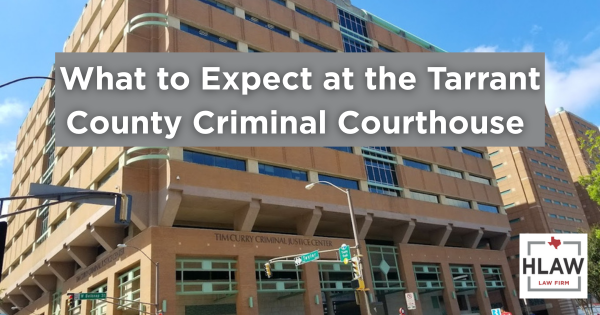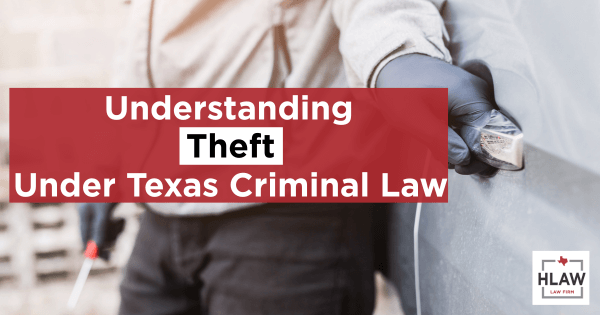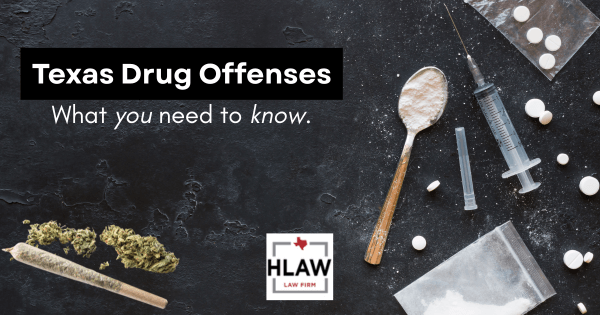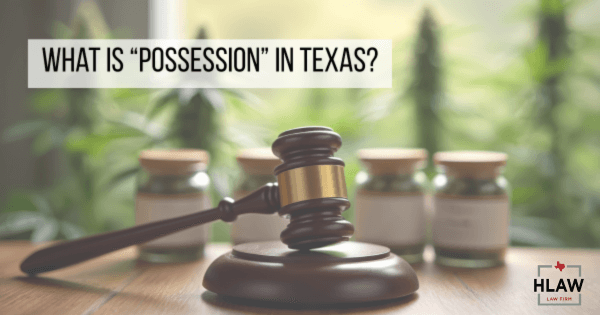
Navigate your pedestrian accident claims confidently with a trusted Fort Worth lawyer. Get the compensation you deserve for your injuries and losses today!

Navigate your pedestrian accident claims confidently with a trusted Fort Worth lawyer. Get the compensation you deserve for your injuries and losses today!

HLAW is thrilled to continue our two scholarships for 2025. In honor of the sacrifices of our military veterans, we decided to that the scholarships should be connected to military service. The first scholarship is a $500 award for a Military Veteran Law Student and the second scholarship is a $500 award for a Military Dependent undergraduate student. Throughout the year, we received several applications from very deserving students. We appreciate all of the students that took the time to apply for the scholarships and wish them all the best in their studies. For those students that were not selected, we invite you to apply again next year as we plan to continue the scholarship offers as an annual award.
The winner of the 2025 Military Veteran Law Student Scholarship is:
Grace May is a Marine Corps veteran. Ms. May currently attends Trinity Law School in Santa Ana, California. Congratulations Grace May. Best wishes as you continue toward your law degree!
The winner of the 2025 Military Dependent Undergraduate Scholarship is:
Ashley Brewer is a US Navy dependent whose parents are both veterans (Mom, Air Force and Dad, Army). Ms. Brewer is attending High Point University in High Point, North Carolina and is pursuing a degree in Theatre and Finance. Congratulations Ashley and best wishes as you continue in your studies!
For more information about how to apply for these scholarships in future years, please visit the scholarship pages:


Insurance companies often use surveillance to monitor personal injury claimants—know your rights and how to protect your case.
Surveillance is a frequent tool employed by insurers in personal injury cases to assess the validity of claims and guard against fraud—even in honest cases. These investigations typically target injuries that are subjective (like chronic pain or soft-tissue injuries) or claims involving large payouts .
Insurance companies may deploy private investigators to observe claimants’ daily activities—tailing them in public, taking photos or videos, or even requesting field visits, like home visits, particularly in long-term disability or workers’ compensation claims .
Defense counsel also rely on surveillance to challenge credibility by capturing footage suggesting the claimant is more active than their alleged injuries permit.
Surveillance in personal injury cases is common in Texas. Insurance companies may monitor claimants physically, digitally, or through third-party reports to challenge injury claims—even legitimate ones. While much of this activity is legally permissible when carried out in public spaces, there are boundaries—especially regarding privacy violations.
Staying informed, cautious, and consistent—especially regarding your public behavior and online presence—is essential. Our attorneys at Howard Lotspeich Alexander & Williams, PLLC (HLAW) can help you navigate surveillance threats and protect your interests throughout the claims process. Contact us today for a free case evaluation and consultation.


Understanding what to expect during your criminal court settings at the Tarrant County Courthouse can help reduce anxiety and prepare you for each step in the legal process.
When someone is facing criminal charges, after an arrest and getting out of jail, one of the next events that causes someone in this situation a good amount of anxiety is having to navigate through the often-foreign process of the criminal courts system. Knowing more about how this process works can ease your mind a bit and help you focus on the substance of what you and your attorney will work towards in your case.
This article aims to give you what you need to know and expect at the Tarrant County Criminal Courthouse and attending court settings.
When a case has been filed by the District Attorney, a court is assigned to that case. In Tarrant County, the first thing that the court will do is set what is called an Initial Appearance (IA) court date. The sole purpose of the IA is for the court to determine what the status is of you being represented. The court is ordering you to come to the IA to either inform the court 1) whether you have an attorney or will be hiring one or 2) if you would like to apply for a court-appointed attorney. Typically, the court informs you of this setting via text message. Because most people are not familiar with what an IA is, they typically get concerned about having to go to court for this and assume that something more significant is going to take place in this setting. However, the IA is not a trial, and not a setting where anything other than addressing a person’s attorney situation is addressed.
The good news is that if you hire an attorney before this setting, then the attorney should enter a Letter of Representation with the court. Once the court receives that Letter of Representation, then the court will typically cancel that setting and reset the case to a later date to allow time for the attorney to obtain discovery and start working on your case.
The IA is a formal setting and if you receive notice to be at court and you haven’t retained an attorney, you must attend this setting. Important: For any setting notice that you receive from Tarrant County, you must be there unless notified otherwise by the court or your attorney. Failure to appear to court after being notified of a setting can and will result in a warrant being issued for failure to appear.
After the IA has either been rescheduled or held, then you should have an attorney (either by retaining one or by receiving court-appointed counsel). From that point, the court will set routine settings approximately every 30 days (although this time period varies depending on the size of the court’s dockets at a given time). Some courts have different names for these settings and will schedule them in different orders. In general though, regardless of whether the setting is called a pre-trial setting, evidence exchange, or even sometimes a motions docket, these settings all typically proceed in the same manner (explained below).
At all of these settings, the Judge, you, your attorney and the State’s prosecutor assigned to your case will be present for court. And, at any of these settings the case can be disposed of either by way of a dismissal or guilty plea. If a guilty plea is worked out, then you will go in front of the Judge with your attorney to formalize the plea and conclude the case. If a dismissal is obtained, then the prosecutor can file their Motion to Dismiss with the Judge on any of these settings as well. If further negotiations are going to be required and nothing is resolved, then the court will continue to move the case forward by resetting the case to the next setting to continue to give your attorney and the State an opportunity to resolve the case without having to set the case for trial.
As the case moves through the order of settings, the court will not allow the case to simply be reset over and over again inevitably. In general, a case will be given around 3 settings before the Court sets the case for what is called a Status Conference setting. The Status Conference setting is regarded as the final setting before the case is set for trial and is the setting where the Court is looking for either the case to be pled out or set on a trial docket.
If the case is not either dismissed or pled, then the court will set the case for a Trial docket. The routine settings and status conference setting generally proceed in the same manner (explained below). The Trial Setting is unique and is the setting that most people think of as far as what Court looks like from what they’ve seen on television and movies.
Again, for all court settings that you receive notice of, you must be present or the court will issue a warrant for failure to appear. You should keep in close contact with your attorney regarding all settings to confirm the setting. Sometimes things do change, and your attorney should have a direct line to the court to be able to confirm that the setting is scheduled and to confirm that you will be required to come to court for that particular setting.
At routine court settings, there are generally 20-40 people set on the same docket (list of cases scheduled for that day) all at the same time. Some people have this idea that when they go to court it will just be them and their attorney alone in the courtroom with the prosecutor and Judge. However, this is far from the case. With up to 40 (sometimes even more) people all set at the same time on the same docket, the routine court settings are often extremely crowded and busy. Your notice for your setting will typically tell you that the setting is scheduled for 8:30 or 9:00 a.m. (this too can vary). Regardless of when the setting is scheduled for, the court’s text-message notice will usually tell you to be at court an hour to an hour and a half early. The reason for this is because (with the amount of people all coming at the same time to the courthouse for docket) parking and getting to your individual court on packed elevators can significantly delay you actually getting to your court. It’s good advice to follow that direction and come to court early. The primary reason you want to do this is because the Judge in the court will often call “roll” for everyone on the docket at exactly the time when court is scheduled for (think “roll-call” like when you were in school). In addition, almost every court has you check in with the bailiff (as you will see others doing) right when the courtroom doors open (and they often don’t open them until right before the scheduled start time). The court/bailiff will note what time you have arrived at court. Being late to court can also potentially result in you being taken into custody. So, get to your setting early and immediately go into the courtroom when the doors open and check in with the bailiff that will be sitting at his/her desk in the courtroom.
We often tell our clients that their most important job for these routine court settings is to be there and be there on time. Other than that, your attorney should be taking the lead from there and will inform you on what’s going on with the case and what to expect moving forward.
During these routine settings, everyone scheduled for court will sit in the audience-portion of the courtroom while their attorney’s are speaking with the prosecutors about the cases (either in the courtroom or in a room behind the courtroom). Your attorney will usually get you after they’ve spoken with the State and take you into the hall to update you on the case. Once that is done, your attorney will update the court with the status of the case and the case will either be reset or if a plea has been worked out your attorney will go over plea paperwork and talk to you about what happens next. If the case is just going to be reset, then your attorney should inform you of this and let you know when you can go.
All routine settings and even the Status Conference setting proceed in this same general manner. However, if you attend the Status Conference and don’t enter a plea on your case, then the case will be placed on a Trial Docket for a Trial setting explained below.
If the case was not resolved (by way of a dismissal or plea) during one of the routine settings, then the case will be set for Trial. You should be maintaining good contact with your attorney after the Status Conference (if the case is set for trial), because the Trial setting means that your case very likely will be actually going to trial on that date.
While courts do typically set multiple cases for trial on the same date, you and your attorney should anticipate that your case will be going to trial on that date regardless. Your attorney will be in contact with the State to gauge a little more about whether you’re the #1 case on the docket or not. But, even if you’re not the #1 case on the trial docket that doesn’t mean that the cases set in front of you won’t all get pled out leaving your case to be up for trial.
Trial will proceed on the Trial Date by way of picking the jury, opening statements, presentation of evidence and closing statements. Trial can take a day for some simple misdemeanors or it can take weeks or even months (for capital felonies). Regardless, that process starts on the day of the Trial setting and continues until a verdict (and potential sentencing) occurs in the case.
If you’ve never been through the criminal justice system in Tarrant County, the prospect of “going to court” can be frightening and certainly foreign. But, knowing what to expect hopefully eases some of that anxiety. Ultimately, the best way to manage this stress is to retain an experienced attorney who has the knowledge, background and communication with you to keep you informed as to what to expect every step of the way.
At the HLAW law firm, we are committed to walking side-by-side with our clients and always being mindful of the stress you’re under when facing criminal charges. We take as much time as we need to make sure you’re fully informed every step of the way and to make sure you understand the process and what to expect.
If you’re facing criminal charges, contact the HLAW firm today for a free consultation to start getting prepared for your defense and to learn what more you might need to expect at the Tarrant County Criminal Courthouse.


Know your rights: Theft charges in Texas range from petty shoplifting to felony offenses—get the legal defense you deserve.
In Texas, theft is defined under Texas Penal Code § 31.03 as the unlawful appropriation of property with intent to deprive the owner of it. But that simple definition masks a wide range of possible charges—from shoplifting a T-shirt to stealing corporate funds. The consequences vary significantly depending on the value of the property, the method of theft, and whether aggravating factors are involved.
In this guide, we break down the different types of theft charges in Texas, the applicable laws, penalties, and why having an experienced Texas theft defense attorney is critical to protecting your rights.
Legal Definition: Theft of property valued at less than $2,500, under Tex. Penal Code § 31.03(e).
Charge Level and Penalties:
Legal Definition: Theft becomes a felony when the value of the stolen property exceeds $2,500 or involves certain protected items, like firearms, livestock, or election ballots.
Felony Theft Levels:
Aggravating Circumstances:
Although distinct offenses, robbery and burglary often stem from theft-related conduct and are charged under separate statutes:
Shoplifting is a form of theft prosecuted under the same § 31.03 statute, but it frequently involves unique elements like store surveillance, witness statements, and security procedures.
Factors Affecting the Charge:
Diversion Programs: In some counties (and in Tarrant County, Texas), first-time offenders may be eligible for pretrial diversion or deferred adjudication, avoiding a conviction if successfully completed.
Texas law treats knowingly receiving or possessing stolen property the same as stealing it, under Tex. Penal Code § 31.03(b).
Prosecution Must Prove:
Penalty Level: Based on value of property and criminal history, ranges from Class C misdemeanor to first-degree felony
Theft charges may seem straightforward, but legal defenses are often nuanced:
An experienced Texas theft lawyer can:
At the HLAW Firm, we take a client-centered approach to every criminal case. Whether you’re a first-time offender or facing felony theft, we’re here to protect your rights and your future.
Theft charges in Texas cover a wide spectrum—from simple shoplifting to major corporate embezzlement. But regardless of the value or circumstances, a conviction can carry serious consequences for your freedom, record, and reputation.
If you’re facing any type of theft charge, don’t navigate the legal system alone. Contact the HLAW Firm today to schedule a confidential case review and get the strong, experienced representation you deserve.


An accusation of assault in Texas can have serious and life-altering consequences. Our latest blog post breaks down the different degrees of assault charges, potential penalties, and possible legal defenses. Learn more about protecting your rights.
When people hear the phrase “assault and battery,” they often envision two distinct criminal offenses: one encompassing threats of harm and the other involving actual physical violence. However, it’s crucial to understand that under Texas law, the legal landscape is structured differently. The term “battery” is not used to define a separate criminal offense. Instead, both the act of threatening harm and/or the act of causing physical harm are typically consolidated under the broader legal definition of assault. This fundamental difference is key to comprehending how such charges are prosecuted in the state.
This post aims to provide a comprehensive breakdown of what constitutes assault under the Texas Penal Code, delve into the varying degrees of severity and their classifications, and outline the potential penalties that individuals accused of these offenses may face. We will also explore related offenses like aggravated assault and common legal defenses.
The Texas Penal Code § 22.01 provides a specific and multifaceted definition of assault. A person commits assault if they engage in any of the following actions:
Because this statutory definition of assault encompasses both verbal or gestural threats (with no physical harm necessarily resulting) and actual physical contact that might or might not cause bodily injury, Texas law effectively subsumes what many other jurisdictions would categorize separately as “battery” into its singular assault statute.
Assault charges in Texas are not one-size-fits-all. The severity of the charge and the potential penalties depend heavily on the specific circumstances of the incident, the harm caused, the identity of the victim, and the defendant’s prior criminal history.
Distinct from simple assault, though closely related, is the offense of aggravated assault, as defined under Texas Penal Code § 22.02. This charge signifies a more severe form of assault. A person commits aggravated assault if, during the commission of an assault (as previously defined), they either:
Facing an assault charge does not automatically mean conviction. The Texas legal system provides for due process and various defenses that, if applicable to the facts of the case, could lead to charges being reduced or dismissed. Common defenses in assault cases include:
It is absolutely critical to understand that the viability and success of these defenses are highly dependent on the specific, unique facts and circumstances of each individual case. Gathering evidence, witness testimony, and understanding the nuances of Texas self-defense laws (including the Castle Doctrine and Stand Your Ground principles, where applicable) are vital. Therefore, consulting with an experienced criminal defense attorney is paramount to thoroughly investigate the case, identify all possible defenses, and develop an effective and tailored defense strategy.
A conviction for assault in Texas can have profound and lasting repercussions that extend far beyond court-imposed fines and potential imprisonment. These collateral consequences can significantly impact a person’s future:
In summary, under Texas law, the traditional concept of “battery” is effectively integrated within the broader offense of “assault”. This legal framework makes it essential for anyone facing such allegations to understand precisely how Texas law defines and penalizes a wide array of threatening or harmful behaviors.
Whether an assault charge is classified as a misdemeanor or a felony, it invariably carries the potential for serious penalties, including substantial fines, incarceration (in county jail or state prison), and a host of long-term collateral consequences that can shape an individual’s future. Given the complexities of the law, the nuances of evidence, and the severity of potential outcomes, facing an assault charge alone is a daunting prospect.
Facing assault charges in Texas can be overwhelming, with serious consequences that can impact your life for years to come. Don’t navigate this complex legal challenge alone. If you or someone you know is confronting assault charges, the time to act is now. It is absolutely imperative to secure the counsel of a qualified and experienced criminal defense attorney immediately.
At Howard Lotspeich Alexander & Williams, PLLC (HLAW), our knowledgeable attorneys are ready to:
Your future is too important to leave to chance. Contact Howard Lotspeich Alexander & Williams, PLLC (HLAW) today for a confidential consultation. Let our experience work for you.


An overview of common Texas drug offenses, from possession of controlled substances to drug paraphernalia. Learn what you need to know about Texas drug laws.
Facing drug charges in Texas can be a daunting experience, with potential consequences ranging from hefty fines and incarceration to long-term impacts on your personal and professional life. Texas has some of the strictest drug laws in the nation, and understanding the nuances of these statutes is crucial for anyone navigating the legal system. This detailed guide, complete with relevant legal citations, aims to shed light on the various types of drug offenses in Texas and the severe penalties associated with them.
Possession of a controlled substance without a valid prescription is a serious offense in Texas, governed primarily by Texas Health and Safety Code §§ 481.115 – 481.118. The severity of the charge and its associated penalties are highly dependent on several critical factors:
Understanding “Possession”: It’s important to note that “possession” in Texas law doesn’t necessarily mean holding the substance in your hand. It can refer to “actual possession” (direct physical control) or “constructive possession” (exercising care, custody, or control over the substance, even if it’s not on your person). Prosecutors must prove that the accused knowingly or intentionally possessed the substance in one of these ways.
Despite a growing national trend towards marijuana legalization, Texas maintains strict laws regarding marijuana possession. Texas Health and Safety Code § 481.121 specifically addresses marijuana offenses, with penalties directly tied to the quantity possessed.
| Amount Possessed | Classification | Penalty |
| Less than 2 ounces | Class B Misdemeanor | Up to 180 days in county jail, up to $2,000 fine |
| 2–4 ounces | Class A Misdemeanor | Up to 1 year in county jail, up to $4,000 fine |
| More than 4 ounces to 5 pounds | State Jail Felony | 180 days to 2 years in state jail, up to $10,000 fine |
| More than 5 pounds to 50 pounds | 3rd Degree Felony | 2–10 years in state prison, up to $10,000 fine |
| More than 50 pounds to 2,000 pounds | 2nd Degree Felony | 2–20 years in state prison, up to $10,000 fine |
| More than 2,000 pounds | 1st Degree Felony | 10–99 years or life in state prison, up to $100,000 fine |
Note on “Usable Quantity”: For a marijuana possession charge to stick, the prosecution must prove the individual possessed a “usable quantity.” This generally means enough to be used as a drug, though there’s no precise definition, and it can be a point of contention in legal proceedings.
The possession of drug paraphernalia, while often a lesser offense than drug possession itself, can still lead to significant legal trouble. Texas Health and Safety Code § 481.125 broadly defines paraphernalia to include any equipment, products, or materials used or intended for use in cultivating, manufacturing, processing, packaging, storing, or consuming controlled substances. Common examples include:
Simple possession of drug paraphernalia is typically classified as a Class C Misdemeanor, punishable by a fine of up to $500. However, if the prosecution can prove that the individual sold or possessed paraphernalia with the intent to sell it, the charge can escalate to a Class A Misdemeanor or even a felony, depending on the circumstances, such as selling to a minor.
These offenses represent some of the most serious drug charges in Texas, outlined in Texas Health and Safety Code §§ 481.112 – 481.114.
The penalties for manufacturing or delivery are extremely severe and are determined by the Penalty Group of the substance and the quantity involved. For example, manufacturing or delivering a small amount of a PG1 substance can be a state jail felony, while large-scale operations involving significant quantities can result in first-degree felony charges, with potential sentences of life in prison and massive fines. Furthermore, enhanced penalties apply if these offenses occur in designated drug-free zones or if minors are involved in the illicit activities.
Even if an individual isn’t caught in the act of manufacturing or delivering, they can still be charged with Possession with Intent to Deliver (PWID) under Texas Health and Safety Code §§ 481.112 – 481.114. This charge relies on circumstantial evidence that indicates the intent to distribute the controlled substance. Prosecutors often infer intent from:
The penalties for PWID mirror those for actual manufacturing or delivery, making it a very serious charge.
Texas takes a particularly harsh stance on drug offenses committed near protected locations. Texas Health and Safety Code § 481.134 designates “drug-free zones” and mandates enhanced penalties for offenses that occur within 1,000 feet of:
These enhancements can include increased minimum sentences, often doubling the potential fine and adding additional years to a prison sentence. The rationale behind these laws is to protect vulnerable populations and deter drug activity in areas frequented by children and those in rehabilitative environments.
The Texas Health and Safety Code categorizes controlled substances into distinct Penalty Groups, which are fundamental to determining the severity of drug charges.
There are several federal acts that regulate drug charges, but the primary act is the Controlled Substances Act (CSA) (21 U.S. Code § 801 et seq.). This federal law establishes five schedules for controlled substances, similar to Texas’ Penalty Groups, and sets out various criminal offenses related to manufacturing, distributing, and possessing these substances.
Federal drug charges are usually applicable when:
Federal convictions under Title 21 U.S. Code often carry mandatory minimum sentences, meaning judges have less discretion in sentencing. For example, trafficking certain quantities of controlled substances can trigger mandatory minimums of 5 or 10 years, and these sentences can be significantly increased for repeat offenders or those involved in large-scale conspiracies. Federal prisons also tend to have different conditions and parole opportunities compared to state prisons.
A strong defense strategy is paramount when facing drug charges in Texas. A skilled criminal defense attorney will meticulously examine every aspect of your case to identify potential weaknesses in the prosecution’s arguments and avenues for defense. Common defense strategies include:
The landscape of drug charges in Texas is complex and unforgiving. From the nuances of penalty groups and drug-free zones to the harsh realities of mandatory minimum sentences, the impact of a conviction can be profoundly life-altering, extending beyond immediate fines and incarceration to long-term criminal records that affect employment, housing, and civil liberties.
If you or a loved one is facing drug charges in Texas, the urgency of securing knowledgeable legal representation cannot be overstated. A qualified criminal defense attorney possesses the expertise to challenge illegally obtained evidence, skillfully advocate for reduced charges, or strategically negotiate for alternative outcomes such as drug diversion programs. Their in-depth understanding of Texas drug laws, courtroom procedures, and prosecutorial tactics is invaluable in protecting your rights and fighting for the best possible outcome in your case. Do not delay in seeking professional legal guidance.
A drug charge can be an overwhelming experience, but you don’t have to face it alone. At Howard Lotspeich Alexander & Williams, PLLC (HLAW), we understand the complexities of Texas drug laws and are dedicated to providing compassionate yet aggressive representation. Let us help you navigate this challenging time. Reach out for a free, confidential case evaluation by calling 817-993-9249 or contacting us here.

Plea bargaining is a pivotal part of Texas’s criminal justice system. In fact, the vast majority of criminal cases in Texas are resolved through plea deals rather than jury trials. This process allows for negotiated resolutions

Choosing a legal path: Understanding how plea bargaining works in the Texas criminal justice system.
between the defense and prosecution, potentially sparing both parties the cost, uncertainty, and emotional toll of trial. But while plea bargaining offers efficiency, it also raises concerns about fairness and justice.
Let’s take a closer look at how plea-bargaining works in Texas, its advantages and disadvantages, and what it means in real-world criminal cases.
Plea negotiations usually begin after the defendant has been formally charged and the discovery process has begun. Either side—prosecution or defense—can initiate the discussion.
The prosecutor presents a proposed deal, which might involve:
The defense attorney evaluates the offer and may negotiate modifications or propose alternatives based on the strength of the evidence, the defendant’s background, and mitigating factors.
Once both sides reach an agreement, the judge must review the plea. Texas judges ensure:
The defendant appears in court, formally enters a guilty or no-contest plea, and is sentenced according to the deal. In some cases, sentencing may be delayed for further hearings or pre-sentence investigations.
Efficiency – Court dockets in Texas are crowded. Plea deals expedite resolution, reduce backlogs, and allow courts to focus resources on more complex or contested trials.
Certainty and Predictability – Trials carry risk. Even strong defenses can falter before a jury. A plea deal provides a known outcome, which can be critical for defendants concerned about family, employment, or immigration status.
Reduced Sentences – Defendants often receive a more lenient sentence through a plea than they would if convicted at trial. This might include:
Protection for Victims – Plea deals can spare victims from testifying in open court, which may be especially important to the prosecution in sensitive cases such as assault, domestic violence, or sexual offenses.
Risk of Coercion – Defendants may feel pressure to accept a plea—even if innocent—because the risk of trial (e.g., decades in prison) is too great. This is especially true when bail is denied, or pretrial detention continues.
Unequal Justice – Outcomes can hinge on legal representation. Those with experienced defense attorneys may secure better deals than unrepresented or underrepresented defendants.
Lack of Transparency – Plea deals occur behind closed doors. Unlike trials, they are not public proceedings, leading to concerns about accountability and consistency.
Limited Appeal Options – Once a plea is entered and accepted, the right to appeal is typically waived. This means defendants lose the ability to challenge errors in evidence gathering, charging decisions, or constitutional violations.
Here are a few examples of how plea bargaining might play out in everyday criminal cases:
DWI Cases – A first-time DWI defendant might be offered a plea to “obstruction of a highway,” a Class B misdemeanor with less stigma and fewer long-term consequences.
Drug Possession – Non-violent offenders may be offered pretrial diversion or deferred adjudication in exchange for counseling, community service, and clean drug tests.
Family Violence – In some cases, a charge may be reduced from a family violence assault to simple assault without the “affirmative finding,” avoiding future firearm bans or enhanced penalties.
Felony Theft or Assault – A felony may be reduced to a state jail or misdemeanor offense, especially if restitution is made or the victim supports leniency.
If you’re considering a plea deal, keep these practical tips in mind:
Plea bargaining isn’t about guilt or innocence alone—it’s a legal strategy shaped by risk, opportunity, and the facts of each case. While plea deals offer a path to resolution and can be in the best interest of many defendants, they should never be entered into lightly.
If you or someone you love is facing criminal charges in Texas, don’t navigate this alone. An experienced defense attorney can help you make informed decisions, protect your rights, and find the best path forward.


Title IX affects more than just academics—know how it shapes student rights, due process, and investigations on campus.
If you’re a college student (or soon to be college student), understanding what “Title IX” is could be critical to your academic and personal future. Whether you’re involved in athletics, a campus relationship, or facing allegations, Title IX could impact you and your academic future.
Title IX is a federal civil rights law passed in 1972 that prohibits sex-based discrimination in federally funded educational institutions. It ensures equal access to education and protects students from sexual harassment, assault, and other forms of sex-based misconduct. Recent Federal Regulations put in place a process for schools and Universities to deal with complaints related to sexual harassment, assault and other forms of sex-based misconduct.
Title IX protects students of all genders and affects multiple areas of campus life, including:
Colleges must investigate reports of:
Schools must ensure a fair, unbiased process for both complainants and respondents.
Students accused of violating Title IX have the right to:
Complainants and Respondents can receive academic accommodations, no-contact orders, counseling referrals, and other supportive measures — regardless of whether they pursue a formal complaint.
A Title IX case typically includes:
The outcome can include disciplinary action, suspension, or expulsion. Because of this, legal representation is essential.
Title IX investigations can have potential long-term academic and professional consequences. Misunderstanding your rights or failing to prepare (with an experienced Title IX attorney) can result in unfair outcomes. An experienced Title IX attorney can:
At HLAW Firm, we’ve represented students across Texas (and in other States) in high-stakes Title IX proceedings. HLAW Partner Luke Williams is certified by NASPA (National Association of Student Personnel Administrators) on how Universities have implemented the federal regulations that govern Title IX proceedings nationwide.
We understand how stressful and complex these cases can be and we strive to provide high-level, compassionate representation of each student we advise. Whether you’re filing a complaint or responding to one, our compassionate, strategic representation can make all the difference.

In Texas, the concept of “possession” can sometimes be a little tricky when we think about it in terms of the law as opposed to what we all commonly define as “possession”. Whether it’s related to controlled substances, firearms, or stolen property, possession is a key element in many criminal offenses. But what does possession actually mean in the eyes of Texas law? This post will break down the definition, legal standards, and consequences of possession in the Lone Star State.
Under Texas Penal Code §1.07(a)(39), possession is defined as having “actual care, custody, control, or management.” This broad definition means that possession isn’t limited to physical ownership. Instead, it can include situations where a person has any access to or control over an object, even if they don’t physically hold it at the moment.
Possession can be categorized into two types:
To prove possession in a criminal case, the prosecution must demonstrate two key elements:
Merely being near an illegal item is not enough to establish possession. For example, if drugs are found in a house shared by multiple roommates, the prosecution must show evidence linking the accused to the drugs specifically—such as fingerprints, ownership of the container, or incriminating statements.
Texas law also recognizes the concept of joint possession. This means that more than one person can be found to have possession of the same item. For example, if two people are in a vehicle and illegal contraband is found in a location accessible to both, they could both potentially be charged with possession.
Possession charges can carry serious consequences in Texas, varying based on the type and quantity of the item in question. For instance:
There are several potential defenses to possession charges in Texas, including:
“Possession” is a nuanced legal concept in Texas, encompassing both actual and constructive control over items. Understanding the intricacies of possession is crucial for anyone facing criminal charges. What you think may or may not be possession may be different than what the law defines it as. If you or someone you know is dealing with a possession-related charge, consulting an experienced criminal defense attorney is essential to ensure your rights are protected and to navigate the complexities of the legal system effectively.